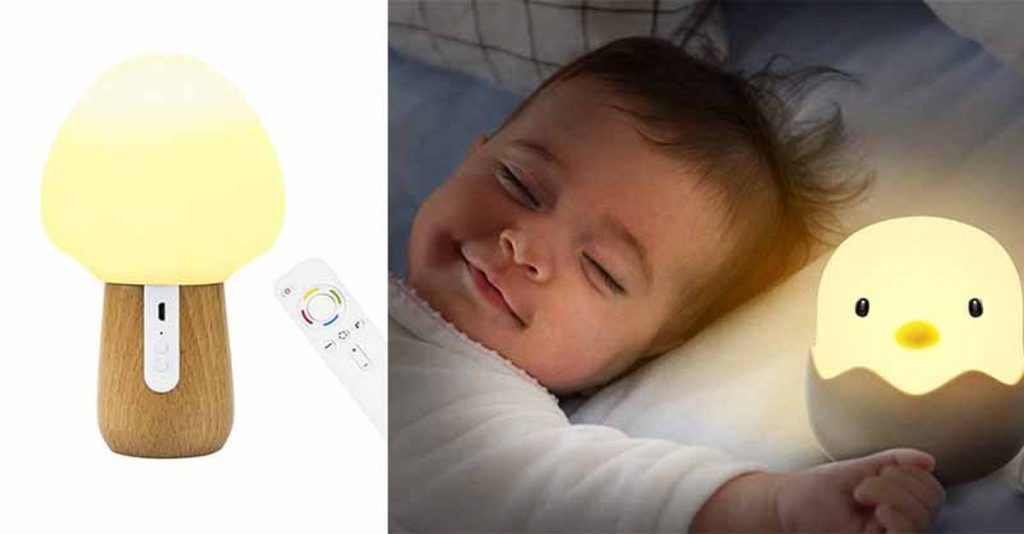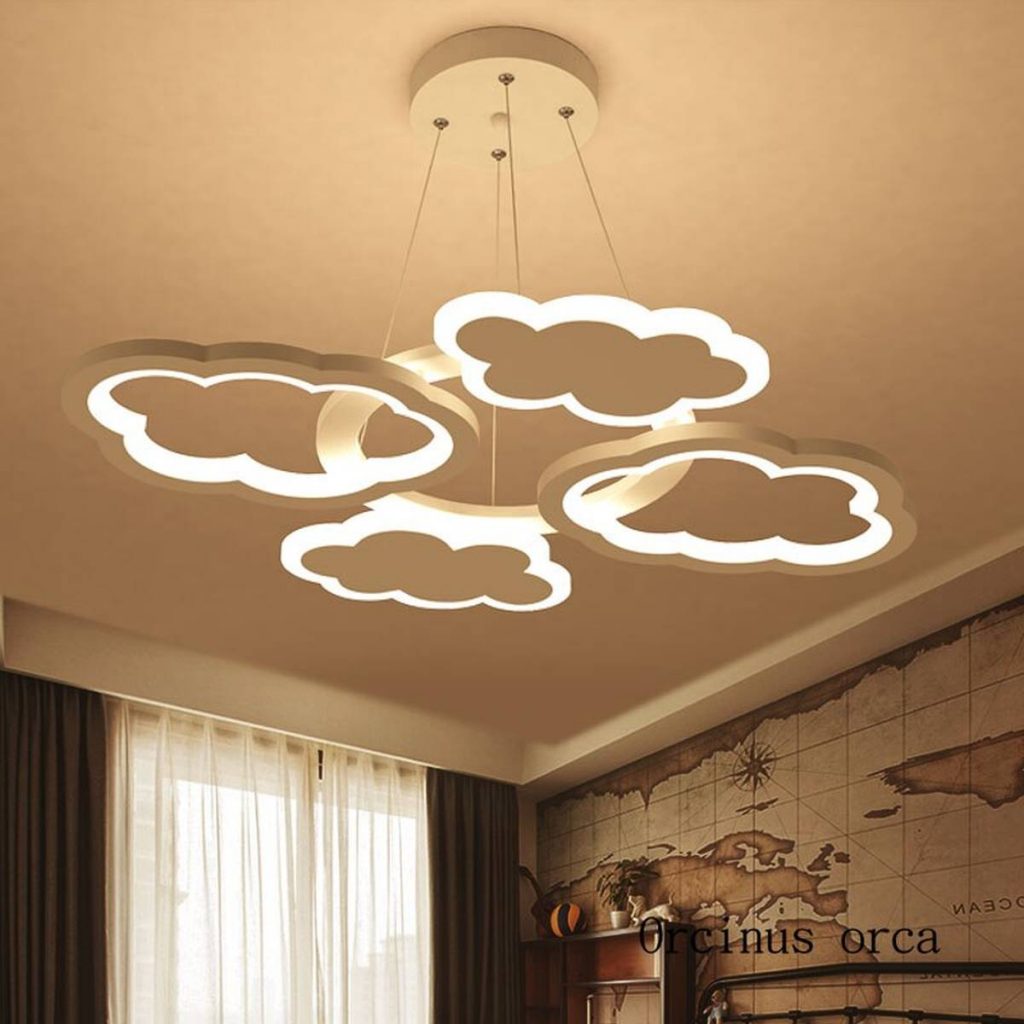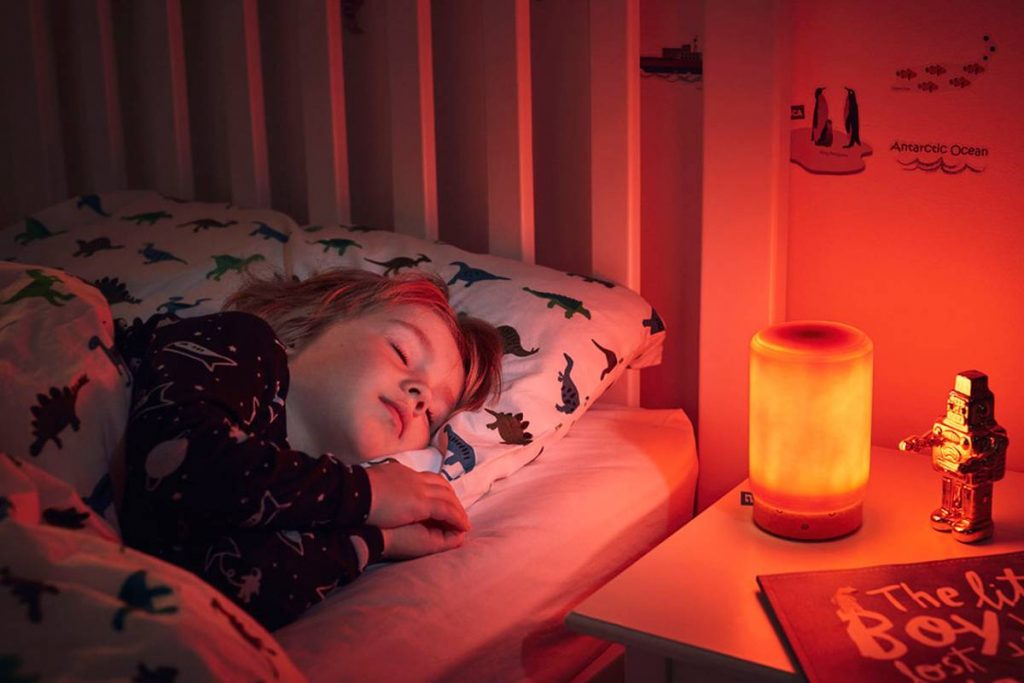Most newborns and young children, however, continue to require frequent reassurance and diaper changes well into the night. The mother and child's sleep health may be compromised if a bright above light is turned on for each feeding, in addition to being extremely arousing. A red nursery nightlight or warm, dimmable nursery lamp, on the other hand, can provide exactly the right amount of light for parents to engage in safe, pleasant evening activity without disturbing their child's sleep. However, studies show that some nursery lamps and nightlights, despite appearing dark, can actually interrupt the sleep of both parents and children. The nursery's lighting, both its intensity and its hue, requires careful consideration.
A night light may seem like a smart idea with all the waking up you and your baby will be doing in the middle of the night throughout their first year. Does a baby really require a night light? Perhaps, but not necessarily. There are advantages (and disadvantages) to putting your infant to bed with one, though.
Although there is no universal rule when it comes to infants, there are some general guidelines to follow. Buying soft lighting, such as night lights, for a baby's room involves a number of considerations. In this article, we discuss the benefits and drawbacks of using a nightlight in a baby's bedroom, with input from a panel of experts.
My Baby Nursery has a wide range of the best baby lighting for your nursery right here.

INFANT JAUNDICE
Some infants' skin may appear yellow at birth. Neonatal jaundice occurs when bilirubin builds up in a baby's blood because their liver isn't mature enough to process it.
Although this pathology is usually not life-threatening, it nevertheless requires careful examination and evaluation by a paediatrician. Jaundice in newborns, in most cases, clears itself without treatment. Although these conditions can be cured fast by exposure to sunlight, parents are cautioned to do so with caution.
Put the crib or bassinet near a window so the baby can get some fresh air. They will still get ample of exposure even if the sky is cloudy or gloomy. Wearing loose, baggy clothes that allow plenty of skin exposure will help prevent them from drying out.
The amount of time an individual spends exposed must be controlled and monitored. depending on how much sunlight enters through the window, seven to ten minutes daily is excellent. The best way to ensure that the baby is getting an even dose is to move him or her around during the exposure. However, you should check with your child's paediatrician to see if this approach is appropriate for your child.
HOW TO USE A BABY NIGHT LIGHT
IT SHOULD BE CAMOUFLAGED.
For parents who are on the hesitant about installing a night light in their child's room, hiding the light can be an effective middle ground.
We suggest that parents diffuse a bright light by placing it behind a piece of furniture rather than putting it directly in front of their child's face.
"Because their eyesight is so hazy at first, babies (especially newborns but also youngsters up to the age of six months) are easily distracted by light and will often look at them. All the time, parents assure me that their infant is staring directly at them in the video monitor, but in reality, the infant is probably just staring at the light on the monitor in his or her room.
STICK TO THE FUNDAMENTALS.
Nightlights have evolved significantly from their simpler beginnings as simple lights, much like the rest of the infant equipment market. Parents today have access to a wide variety of night lights, including those that play music and those that project stars baby's diaper.
However, as neat as they are, you should keep your night light selection simple.
Due to the potential disruption that listening to music before bedtime could cause, we advise against utilising musical night lights or playing music in the baby's room at night. We always recommend that parents turn off any music before putting their child to sleep in a crib. If parents want to play anything continuously throughout the night, we advise them to try white noise first because it is a constant sound that can help filter out home distractions.
MELATONIN, BRIGHT LIGHT, AND SLEEP
Nighttime exposure to indoor lights prevents melatonin generation in 99 percent of both children and adults. Sleep induction, maintenance, and a variety of other sleep- and health-related immune-system benefits are all attributed to melatonin (see these articles for a more detailed look at melatonin and health and melatonin and cancer). According to research published in 2011, "compared with low light, exposure to overhead lights before night reduced melatonin, resulting inside a later sleep onset in 99.0% of people and reducing melatonin duration by roughly 90 min" (Gooley et al.). Most parents are utilising the wrong some kind light in their child's nursery, despite the fact that it is essential, especially in the early months of life.
AVOID USING HARSH LIGHTING
Keeping the house at a pleasant temperature is important for more than simply how it looks. By reducing the contrast between the light and dark with softer lighting, you can minimise overstimulation of a baby's still-developing eyes and provide a much-needed break.
Avoid using direct lighting in the nursery and instead utilise soft, diffused lighting. A baby will be scared and annoyed by these lights, and an inquisitive toddler could get themselves gravely hurt if they wander in. It's best to use lights that diffuse or filter the light rather than those that provide a concentrated spotlight. For a baby's sensitive eyes, choose "soft white" or "daylight" light bulbs.
Another piece of advice: put yourself in the baby's shoes. Bell-shaped shades on ceiling lights are attractive from afar, but they cast an unpleasant glow on your face when you're resting directly beneath them.
EARLY LIGHT STIMULATION
Children are highly attuned to subtle shifts in illumination and benefit greatly from exposure to bright light. They eventually accept and incorporate these alterations into their daily lives as natural developments.
Therefore, awakening their senses with light helps individuals feel more in tune with their environment. Starting with anything basic, like turning off as well as on the light as though it were a game, is ideal between the ages of 3 and 6 months.
Toys with lights are appropriate for infants and toddlers after age of six months, when their interest about the world grows rapidly. Shadow puppets with a light in a dark environment are another fun way to interact with them.
After the age of 10 months, children can begin to play with slightly more complex toys, such as those with more moving parts or buttons.
SET UP A DIMMER
With regular use as part of a bedtime routine, a dimmer switch can aid in your child's ability to relax and drift off to sleep. Dimming the lights creates a calm environment that signals to your little one's body that it's time to sleep. A dimmer will allow you to peek in without disturbing the infant. With this technique, you may rest assured that your baby will remain asleep during any necessary nighttime feedings or diaper changes.
MAKE LIGHT LAYERS
While gentle illumination is pleasant in most situations, it becomes essential when your arms are up to your elbows in a soiled diaper and you need to see what you are doing. So, what's the catch? Make a multi-tiered glow.
Use a variety of lamps and fittings to adjust the lighting in the room rather than relying on one single, harsh overhead light. The ideal number of lights in a bedroom is three, including the overhead light, the changing tables light, and the reading lamp. Lighting might be a hassle, but if you choose wisely based on the task at hand, you'll have plenty of it just where you require it.
THINK ABOUT A RED LIGHT.
Although it is well established that exposure to artificial light at night inhibits melatonin generation, recent studies have shown that red light has the least disruptive effect on circadian rhythms.
"For parents who want to use a night light in their baby's room, We typically suggest a red light because its low colour doesn't interfere with melatonin generation.
There are a variety of red lightings on the market, but if you're more of a DIYer, sleep.org suggests swapping out the ordinary bulb in your baby's night light for a red Christmas bulb.
We have a wide range of baby lighting for your nursery right here at My Baby Nursery.
FOLLOW YOUR INSTINCTS.
While it is true that nighttime lights can be distracting to sleep, if your child is sleeping soundly with their night light on, there's no reason to turn it off. The American Academy of Pediatrics recommends taking into account each child's unique preferences when deciding whether he or she will sleep better in total darkness or with a small amount of light.When it comes to the baby's routines, you know them better than anyone.

CONSIDER COMBINING A CEILING LIGHT WITH A FAN.
There are many advantages to using a ceiling light that is also a ceiling fan. Many infants find the action of the fan comforting and calming, and it can help with energy management by cooling your baby with in summer and blowing warm air down during the winter. When running at moderate speeds, a fan having blade painted in vivid hues is a visual pleasure.
AVOID USING FLOOR LAMPS.
If your infant is just learning to crawl and toddle around the house, you should not put a tall floor lamp near their crib or change table. Anyone, regardless of age, can easily topple a tall floor lamp. As task illumination, only use reliable table lamps with cords that can be neatly tucked away.
HEAT SHOULD BE AVOIDED
In order to prevent burns, keep any light fixtures that employ bulbs in areas where curious infants and toddlers can't reach them. Energy-saving and safer-to-touch alternatives to incandescent bulbs include compact fluorescent lamps (C.F.L. ), often known as halogen lamps, and light-emitting diode (LED) lights.
NATURAL LIGHT CONTROL
The beauty of natural light might be disrupted, though, if your newborn is roused from a restful sleep too soon. If you want your infant to sleep longer and avoid Sudden Infant Death Syndrome (SIDS), make sure the nursery is dark and cool.
As with any other room in a house, a nursery can have its windows dressed in anything from light-filtering sheers to room-darkening blackout curtains. However, it is essential to instal childproofing precautions for all window coverings in a baby's room or a child's bedroom.
WHAT YOU SHOULD KNOW BEFORE USING A BABY NIGHT LIGHT
IT HAS THE POTENTIAL TO DISRUPT THE BABY'S CIRCADIAN CYCLE.
A infant needs to wait until his or her circadian rhythm (or body clock) is properly set before the baby can start sleeping more at night and less during the day. Help your youngster get into the habit of going to sleep when it's time by keeping the house dark and quiet immediately before bed.
If you keep your baby's room dark or dim at night and introduce him or her to natural light during the day, his or her sleep patterns will develop more predictably.
According to Sleep.org, prolonged exposure to bright light can prevent the body from producing serotonin, the hormone that controls sleep and wakefulness.
However, it's excellent news if your kid is utilising a night light or resting better as a result of using one. Sleep.org also notes that "any little quantity of light may make certain newborns calmer or less irritable."
FEEDINGS ARE LESS DISRUPTIVE WHEN DONE AT NIGHT.
Night lights, however more for parents than newborns, can alleviate even bigger interruptions during the night, according to the owner of Sleeping Tight Consultants and certified gentle sleep coach.
A very dim night light can be helpful for parents whose infants are still getting up frequently during the night so that they can see their way around the room without turning on every light in the house. Bringing too much light into the baby's room, which will prevent him or her from sleeping.

EXCELLENT FOR CHILDREN AND PARENTS.
Even though children are the primary target audience for nightlights, They personally believe it is the parents who benefit most from having a night light placed in their child's bedroom.
EASILY RETURN TO SLEEP
It is a given that you will face broken sleep with a new baby in the house. While the midnight trips to the baby crib may be unavoidable, a night light can make it easier for you to return to sleep.
Turning on bright lights when you check on your baby actually causes your brain to become alert and active. Do you know what? Assuming your mind is busy, you probably are, too. In other words, you will have a hard time falling asleep again.
Having a soft night light on in the nursery can allow you to see your kid without jolting yourself awake. In other words, your body and mind will have a much easier time resuming their natural sleep state once your head hits the pillow.
THE ABILITY TO SEE AT NIGHT
While checking on your child in the middle of the night, the soft light from a night light will assist you avoid stumbling over any toys that might be lurking in the dark.
The main reason purchased a night light for the baby was because of this. When They went to check on my son one time, We trod on a Lego piece just on way into his bed. Aside from the roar, the neighbours also heard their son screaming outside.
Check out our range of nursery baby lighting here.
CEILING LIGHTS ARE LESS EXPENSIVE TO OPERATE.
When leaving their child's room, some parents prefer to keep the lights on and the door ajar. While this approach has the potential to be useful as a nighttime light source, it is not without drawbacks. For one, the brightness emitted may be hard to regulate, and second, it consumes far more power than a normal night light.
As a result of their lower energy consumption compared to overhead lighting, night lights help you save money on your electricity bill.
While short-wavelength blue light has been demonstrated to disrupt sleep and melatonin production, long-wavelength red and amber light have been shown to have no such effect. There is no effect of red or amber light on melanopsin receptors. In fact, a study showed that exposure to extremely intense amber lighting (800 lux) hardly affected melatonin levels at all (Kayumov et al.). Therefore, red and orange light provide a false sense of security and keep you and your valuables safe. baby's melatonin production, sleep, and overall health.
To protect melatonin production in both mother and child and to prevent waking or alerting the infant during nocturnal feedings, most paediatricians advise keeping nursery lighting low and warm.
Conclusion
Most newborns and young children continue to require frequent reassurance and diaper changes well into the night. The mother and child's sleep health may be compromised if a bright above light is turned on for each feeding, in addition to being extremely arousing. A red nursery nightlight or warm, dimmable nursery lamp can provide exactly the right amount of light for parents to engage in safe, pleasant evening activities without disturbing their child. Neonatal jaundice occurs when bilirubin builds up in a baby's blood because their liver isn't mature enough to process it. Wearing loose, baggy clothes that allow plenty of skin exposure will help prevent them from drying out. If parents are hesitant about installing a night light in their child's room, hiding the light can be an effective middle ground.
Content Summary:
- Most newborns and young children, however, continue to require frequent reassurance and diaper changes well into the night.
- The mother and child's sleep health may be compromised if a bright above light is turned on for each feeding, in addition to being extremely arousing.
- A red nursery nightlight or warm, dimmable nursery lamp, on the other hand, can provide exactly the right amount of light for parents to engage in safe, pleasant evening activity without disturbing their child's sleep.
- However, studies show that some nursery lamps and nightlights, despite appearing dark, can actually interrupt the sleep of both parents and children.
- The nursery's lighting, both its intensity and its hue, requires careful consideration.
- A night light may seem like a smart idea with all the waking up you and your baby will be doing in the middle of the night throughout their first year.
- Does a baby really require a night light?
- Perhaps, but not necessarily.
- There are advantages (and disadvantages) to putting your infant to bed with one, though.
- Although there is no universal rule when it comes to infants, there are some general guidelines to follow.
- Buying soft lighting, such as night lights, for a baby's room involves a number of considerations.
- In this article, we discuss the benefits and drawbacks of using a nightlight in a baby's bedroom, with input from a panel of experts.
- My Baby Nursery has a wide range of the best baby lighting for your nursery right here.
- Some infants' skin may appear yellow at birth.
- Neonatal jaundice occurs when bilirubin builds up in a baby's blood because their liver isn't mature enough to process it.
- Although this pathology is usually not life-threatening, it nevertheless requires careful examination and evaluation by a paediatrician.
- Jaundice in newborns, in most cases, clears itself without treatment.
- Although these conditions can be cured fast by exposure to sunlight, parents are cautioned to do so with caution.
- Put the crib or bassinet near a window so the baby can get some fresh air.
- They will still get ample exposure even if the sky is cloudy or gloomy.
- Wearing loose, baggy clothes that allow plenty of skin exposure will help prevent them from drying out.
- The amount of time an individual spends exposed must be controlled and monitored.
- depending on how much sunlight enters through the window, seven to ten minutes daily is excellent.
- The best way to ensure that the baby is getting an even dose is to move him or her around during the exposure.
- However, you should check with your child's paediatrician to see if this approach is appropriate for your child.
- For parents who are hesitant about installing a night light in their child's room, hiding the light can be an effective middle ground.
- We suggest that parents diffuse a bright light by placing it behind a piece of furniture rather than putting it directly in front of their child's face. "
- Because their eyesight is so hazy at first, babies (especially newborns but also youngsters up to the age of six months) are easily distracted by light and will often look at them.
- All the time, parents assure me that their infant is staring directly at them in the video monitor, but in reality, the infant is probably just staring at the light on the monitor in his or her room.
- Nightlights have evolved significantly from their simpler beginnings as simple lights, much like the rest of the infant equipment market.
- Parents today have access to a wide variety of night lights, including those that play music and those that project stars baby's diaper.
Frequently Asked Questions About Light
Early stimulation with light
Light is very important for children, who perceive the changes in light with great sensitivity. As they grow, they understand and get used to those changes and include them in their routine.
Light and sleep
A darker room means less stimulation around your child. This will help calm and settle them. A darkened room also tells your child that it's time for rest. Once your child is in bed, they'll sleep better if the amount of light in the room stays the same while they're asleep.
Melatonin is the sleep hormone that helps the body control sleep cycles. Light breaks down melatonin, and consequently, babies will produce lower levels during the day when rooms tend to be brighter. Therefore, napping in a dark room will support this hormone, which in turn helps them fall and stay asleep.
Your baby's eyes are not very sensitive to light in the first month after birth. The amount of light required for a 1-month-old infant to be aware that light is present is 50 times higher than that of an adult. That means that it's okay to leave some lights on in the nursery.
The best colours to decorate your child's bedroom are blue, green, pink, yellow or orange because these colours are mellow and non-stimulating, which causes the brain to relax and prepare for sleep.





